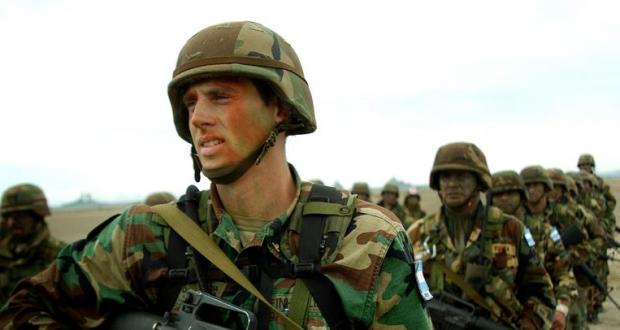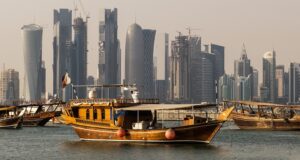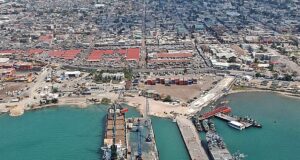November 11th, 2014
By Rowan Allport
It is difficult to believe from the vantage point of 2014, but in 1978, Argentina came within hours of invading Chile. The scheme arose as a result of a conflict between the two countries regarding the ownership of the Picton, Nueva and Lennox islands, which are situated at the western entrance to the Beagle Channel – a waterway running between the Pacific and Atlantic Oceans. The plan envisaged the seizure by the Argentine military of these and a number of other islands, to be followed shortly after by an invasion of mainland Chile, with the intent of capturing the capital Santiago and other key population centres. From this position, the Argentine leadership believed that it would be in an unassailable position to force Chile into a beggar’s peace regarding its territorial demands. Whilst the operation was ultimately aborted at the last minute, it was the then government’s belief that Buenos Ares had the ability to exercise hard power on a substantial scale – together the domestic economic crisis it was experiencing – that ultimately led it to once again travel down the path of aggression with the invasion of the British-governed Falkland Islands in 1982. Although Argentina did not expect the British to attempt to retake the territory and ultimately lost the conflict, its armed forces were – in addition to performing the initial amphibious assault which captured the islands – able to deploy a carrier group, surface action groups and submarines into the South Atlantic, and managed to inflict significant losses on the British using modern anti-ship weapons and a substantial fleet of jet aircraft.
Flashing forward over three decades, the Argentine Armed Forces find themselves in a calamitous state. The depleted Argentine Navy rarely puts to sea, is desperately short of spare parts, and much of the ordinance carried by its ships is past its expiration date. 2012 saw the training ship ARA Libertad seized in Ghana on the orders of a hedge fund seeking reparations from the Argentinian government. Shortly afterward, the corvette ARA Espora was stranded in South Africa for seventy-three days after the German company hired to repair a mechanical fault refused to carry out the work as a result of the Argentine government’s unpaid bills. Then, in a final indignity, 2013 saw the sinking of the decommissioned destroyer ARA Santísima Trinidad in port as a consequence of poor maintenance. The Argentine Air Force largely consists of a collection of obsolete aircraft mostly dating back to the 1970s, which are frequently grounded due to poor serviceability. The Argentine Army has deployed on operations without some of even the most basic equipment and rarely has the resources for training.
So how did this situation arise? As with most such calamities, the root causes are both financial and political. The story of Argentina’s economic fall from grace – both historical and contemporary – is well known. In 1914, Argentina was the tenth wealthiest country in the world, but a century later it has fallen to fifty-fourth place. The last three decades has seen the country careen from crisis to crisis. During the 1980s, Argentina was crippled by inflation and external debt. The free market reforms begun under President Carlos Menem allowed a short reprieve, but a succession of financial crises in Mexico, Brazil, Russia and South East Asia during the 1990s – combined with a failure to tackle numerous underlying domestic economic issues and corruption – sowed the seeds of further catastrophe. In 1998, Argentina’s economy fell into a depression, climaxing with the largest debt default in human history. Though a commodities boom and a currency devaluation allowed room for a brief recovery, the increasing use of interventionist economic policies by the government, along with the 2008 global financial crash and attempts by so-called ‘vulture funds’ to obtain payment for debts on which Argentina had previously defaulted led the country back into crisis, forcing another default in 2014.
Politically, the seeds of the decline of the Argentine Armed Forces were sown during the era of the last military junta, which ruled the country from 1976 to 1983. The execution of the Dirty War by that government against actual and suspected domestic left-wing militants and political dissidents led to between 15,000 and 30,000 Argentinean citizens being killed or ‘disappeared’. This behaviour, when combined with the loss of the Falklands War, left a dark shadow hanging over the armed forces – a situation not helped by the fact that during the late 1980s, the military pressured the government into passing legislation granting amnesty to most of those who had committed crimes during the era of the junta’s rule. The military’s loss of stature in the public eye was a leading factor in the drastic fall in its budget: the resources Argentina allocated to defence fell from 4.4 per cent of GDP in 1983 to 1.7 per cent in 1994.
Whilst seeing a brief return to grace in the 1990s as a result of its successful (if peripheral) participation in the 1991 Gulf War, the election of left-leaning Nestor Kirchner to the Argentine presidency in 2003 returned the crimes of the military to the public eye. He repealed the amnesty laws, allowing for a recommencement of the prosecution of individuals who committed crimes under the junta – a process which continues to this day. His presidential successor and now widowed wife, Cristina Kirchner, has also been no friend to the military. Whilst frequently perceived as paranoid, her mistrust of the armed forces is far from without foundation. It emerged as recently as 2006 that the Argentine Navy was spying on senior political figures, civic activists and human rights organizations – a scandal which ultimately resulted in Kirchner’s large scale purging of the Argentine military leadership in 2012.
It is true that Kirchner has made no secret over her displeasure of Britain’s rule over the Falkland Islands. However, her nationalistic tone should not be interpreted as a pro-military stance – a fact supported by the actions that have accompanied Kirchner’s words. For example, reports of plans for a 33.4 per cent increase (from 26.31bn pesos to 35.1bn pesos) in defence spending this year must be seen in the context of a domestic rate of inflation that is currently estimated to be running at an annual rate of 40 per cent, a currency devaluation in January 2014 (with a second expected in early 2015) and an artificially constrained peso/dollar exchange rate that is around 50 per cent below the true rate reflected by the black market. The proposed jump to an expenditure level of 50.3bn peso in 2015, must also be analysed against this backdrop. In terms of US dollar value, the total increase in military spending from 2013-15, is projected to be from $5.1bn to $5.9bn, and even this is likely to be a considerable exaggeration given the current artificial exchange rate. Overall, the Nestor/Cristina Kirchner era has seen the military fall to near the bottom of Argentina’s spending priorities list: between 2004 and 2013, defence spending has represented only around 0.8 per cent of GDP.
Of course, simply looking at spending levels is inadequate to fully explain the current situation: also important to understanding why the Argentine Armed Forces find themselves so hobbled is actually to examine what the defence budget is spent on. The German Armed Forces have recently suffered from a number of embarrassing revelations regarding the readiness of their military units. However, analysis has placed the blame for the situation not on an absolute lack of funding (Germany spends some $49bn per year [1.3 per cent of its GDP] on defence), but on how it is spent. Currently, over 49 per cent of German military expenditure goes on personnel costs. In contrast, the UK spends 35 per cent of its budget on personnel and the US 36.5 per cent. The higher proportion of expenditure on defence personnel by Germany means that less of the budget is available to spend on equipment and maintenance – hence the reduced level of force readiness. In Argentina the situation is even more extreme: depending on the method of calculation, between 78 and almost 90 per cent of defence spending goes on personnel. In practice, such a spending model means that for many of its members, the Argentine Armed Forces is little more than a jobs programme: those serving get paid, but little else is accomplished. In 2015, it is planned that of $5.9bn of military expenditure, only $138m will go on capital investment.
So what are the Argentine military’s future prospects? Much of the available equipment funding is going towards upgrade programmes. June saw the completion of a major refit of ARA San Juan, one of the navy’s three diesel-electric submarines. However, there is little indication that money will be made available to routinely operate it. The accidental grounding of the ARA San Juan’s sister ship, ARA Santa Cruz, a few days after the former vessel had completed its refit, served to show the atrocious state of the vessel’s hull below the waterline – raising yet more questions about the navy’s maintenance provisions. The wider Argentine Navy is also approaching a state of block obsolescence: by 2020, all but two of its warships will be over thirty years old. Looking to the Argentine Air Force, some modest upgrades to five C-130 transport aircraft are underway and domestic production of the Pampa training/light attack aircraft continues. However, the long-running saga of the acquisition of a new fighter aircraft appears to have no end in sight: it was noted by observers that the 2015 defence spending plan makes no mention of the replacement of the country’s aging Mirage III aircraft, in contrast to the 2014 plan which saw them being replaced by ex-Spanish Air Force Mirage F1 fighters. Subsequent proposals to purchase ex-Israeli Air Force Kfir jets have fallen through, and recently announced plans to buy twenty-four Gripen aircraft would cost billions of dollars that Argentina simply does not have. The Argentine Army is currently taking delivery of upgraded versions of its TAM tank and Huey light helicopters, but the wider force seems likely to remain limited to the types of low-intensity peacekeeping operations it has been involved with in Cyprus and Haiti.
Looking at the bigger picture, any genuine revitalisation of its armed forces will depend on the broader Argentine economy. Currently, most investors are waiting for the next Argentinian general election – presently scheduled to be held in October and November of 2015 – in the hope that it will bring a more pro-market administration to power. Such a government is likely to be on the political centre-right, and more sympathetic to the military. However, the reforms that any such administration would have to bring in would likely include significant public spending cuts (it is estimated that government spending as a percentage of GDP rose from 22 per cent of GDP in 2001 to 44 per cent in 2013), which could further undermine the defence budget. Perhaps more promising is the huge reserve of shale oil and gas Argentina appears to possess. Whilst it would take years to develop the fields, they could hold the potential to significantly relieve the country’s current financial predicament. However, one small crumb of comfort Argentina has at least been able to cling on to in recent years is that at least it is in an economically less chaotic condition than its oil-rich northern neighbour Venezuela: a petrostate Argentina would by no means be immune to financial crises.
Ultimately, it is unlikely that there will be any easy road to recovery for the Argentine Armed Forces. Even with a marked economic upturn in the country, the absence of any real security threat to Argentina, a lingering public and political suspicion of the military, together with numerous programmes demanding funding, will likely limit the scale of any revitalisation. Given this, it seems that the Argentine Armed Forces will have to come to terms with the fact that their fall from grace is a permanent arrangement – something for which they themselves must carry a significant burden of responsibility.
 Human Security Centre Human Rights and International Security Research
Human Security Centre Human Rights and International Security Research




